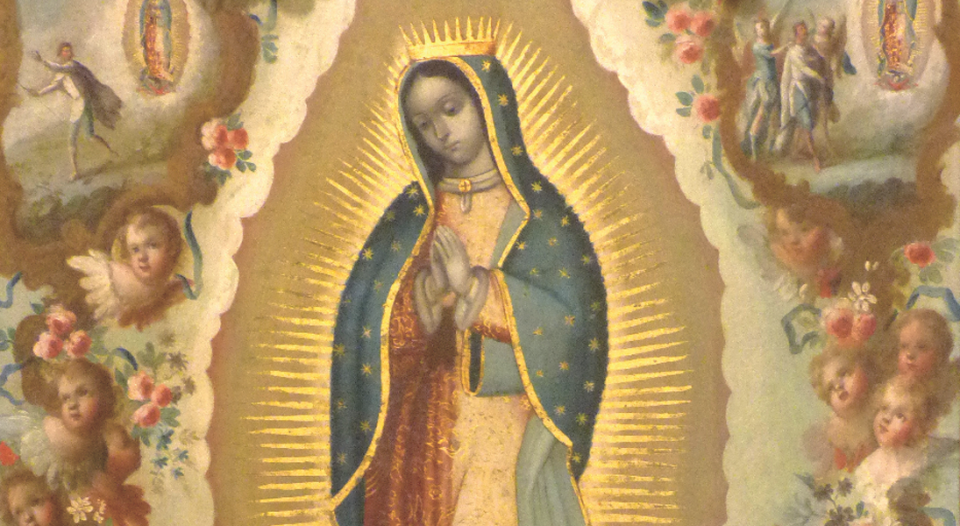Series editor’s note: Throughout 2022, “Deeper Understandings” has featured biblical scholars sharing some of their favorite books of the New Testament. Next year we will do the same with books of the Old Testament, beginning with Samuel Giere writing about Genesis in the January/February issue. —Kathryn A. Kleinhans, dean of Trinity Lutheran Seminary at Capital University, Columbus, Ohio, on behalf of the ELCA’s seminaries
My new favorite word is “behold”—or, in Greek, idou, meaning “look!” It occurs 26 times in Revelation. (Unfortunately, the New Revised Standard Version sometimes omits it.) The “beholds” in Revelation call us to turn aside and see: God and the Lamb Jesus have overcome evil. God is coming to make a home with us on earth. Behold!
Revelation 12 tells the Christmas story of a pregnant woman in the throes of labor, giving birth to a son, Jesus the Messiah. But this isn’t the familiar story of Jesus’ birth that we all know from the Gospels. This is a story told using deeply symbolic images, including the mother’s daring escape from a dragon.
Today we associate dragons with Game of Thrones, but in the Bible they represent evil empires. Ezekiel 29 depicts Egypt as a dragon, and in Revelation, John warns Christians to “behold” the dragon, alluding to the evils of the Roman Empire. The plot of Revelation draws on the prophets and Exodus to call people on a new exodus out of that empire—a message of hope.
Martin Luther loved Revelation 12. He saw the woman in that chapter as the church—God’s people—and even wrote a love song to her. The Latiné community has understood the woman in Revelation 12 to be the Virgin of Guadalupe, who appeared to an Indigenous Mexican centuries ago. Today her radiant image inspires communities to hope and to resist oppression, especially on her feast day, Dec. 12.
Revelation is a book of resistance and hope. Author Kathleen Norris says it’s “a poet’s book.” It’s also a worship book, full of singing. It teaches God’s people to sing their resistance—as in African American spirituals and Handel’s “Hallelujah Chorus” and “Worthy Is the Lamb.” All creation, even animals, join in singing praise to God.
World-healing tree of life
While Revelation can seem threatening and fearsome, its theme is hope, not fear. It’s like the message of hope in Rory Cooney’s hymn “Canticle of the Turning”: the world is not about to end, it is about to turn. The song we sing as God’s people testifies to that turning of the world toward justice, toward life.
Revelation is an urgent wake-up call that can help us discern the “dragons” of today’s empires just as it helped John’s communities see the pathologies of the Roman Empire.
John used descriptions of plagues and pandemics to highlight the danger of joining the empire’s unsustainable trajectory. He called people to “come out” before it was too late (18:4). This reminds me of Ebenezer Scrooge in Charles Dickens’ A Christmas Carol: Scrooge is shown apocalyptic visions of his own future so he can make the radical turning he needs to make before it’s too late.
God comes in Jesus to make a home with us.
We face dangerous dragons today. I hope we can see the need to “come out” of our world’s addiction to fossil fuels, to “come out” of an economic system too similar to the slave-based system John critiques as “Babylon” in Chapter 18. We face the dragon of hatred and nationalism and the twin dragons of hopelessness and despair. Whatever our dragons, Revelation gives us a wonderful vision of the future: a renewed world in which all are welcome and have enough. Revelation turns us to see God’s love for our world, for planet Earth.
Revelation’s journey of turning culminates in a beautiful city and a river of life for all who hunger or thirst. I love that Revelation is the most earth-focused book of the Bible. It’s not about people being “raptured” up to heaven but about the very opposite—we might call it a “rapture in reverse.” God descends from heaven to earth, to take up residence with us. God’s will is to renew and heal our world and each one of us: “See, I am making all things new” (21:5).
Our world is ill: weakened by the pandemic and climate change, and sick with violence. I believe God wants to heal our world. That is the message of Revelation’s medicinal tree of life, whose leaves bring healing. This wondrous vision can guide our ministries of healing today, including Lutherans Restoring Creation. It motivates the ELCA’s new draft social message on climate, giving us hope that Earth can be healed.
Revelation is full of flashbacks and prequels, visions and dreams. We can be sure of this: the victory we long for has already happened on the cross. Christ, our Lamb, has already won the victory. The dragons have been defeated. At the heart of Revelation is a message of hope: God comes in Jesus to make a home with us—behold!



